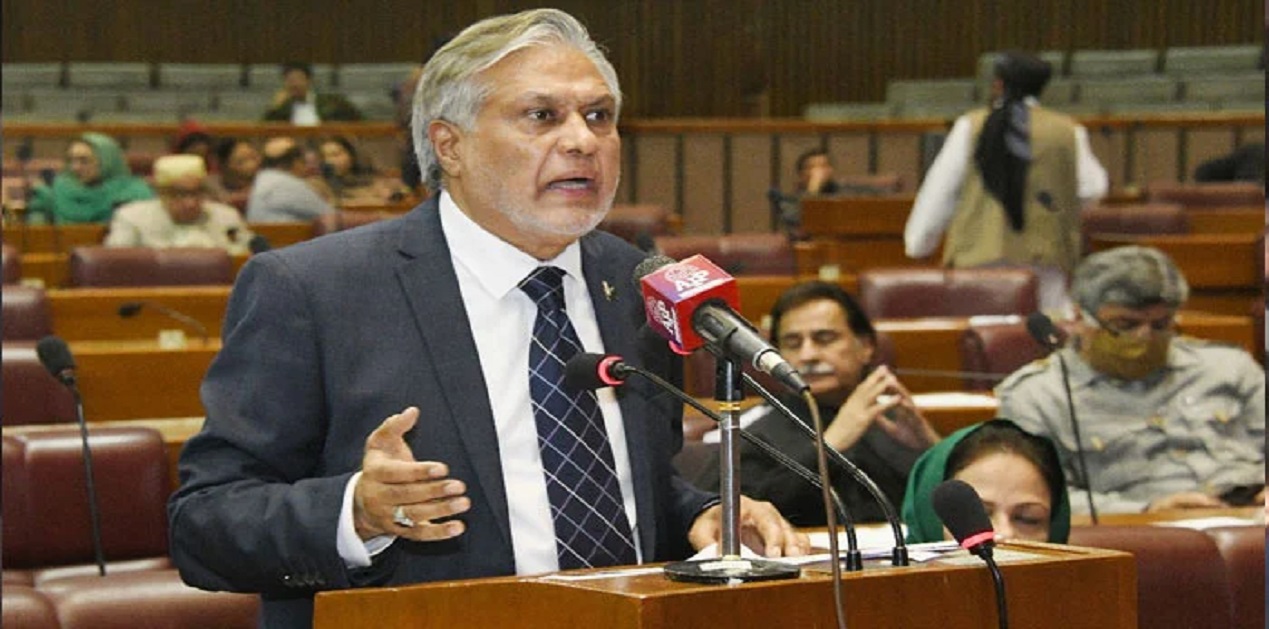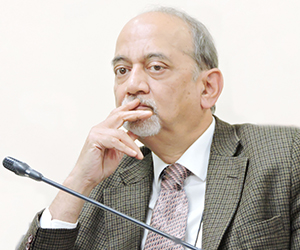Pakistan’s Finance Minister Dar presented the budget for FY 2023-24 on 9th June. Pakistan follows July to June budget cycle. There does not appear to be any serious attempt by the PDM government to address the serious economic crisis the country faces. The 14.5 trillion rupees budget has allocated 1.8 trillion rupees to defence. This marks a 14 % increase over the revised allocation for the current year.[1]
According to Pakistani media reports, defence allocation is 12.51% of the total budget. This is obviously based on official briefings and is misleading on two counts. The actual allocation is higher, as an amount of Rs. 563 billion for military pension is not included in the above figure of Rs. 1.8 trillion. In addition, Rs. 3.4 billion have been allocated under the head of Public Sector Development Programme (PSDP) to the Defence Division and Rs. 2 billion to the defence production division. Adding this, the budget allocation for defence will exceed Rs. 2.3 trillion rupees. Second, the defence outlay is part of the Federal budget. The figure of 14.5 trillion relates to the total budget, which also includes the share of the provinces. Out of total tax revenue of 9.2 trillion, the federal share is Rs. 6.887 trillion. The defence budget as a share of Federal revenue works out to a whopping 33.39%.
The defence allocation exceeds the total sum of Rs. 1.5 trillion allocated to Pakistan’s four provinces. It also dwarfs resources assigned for development or social services. PSDP or development budget is Rs. 950 billion.[2] Benazir Income Support Scheme, which is the government’s flagship programme for the social sector has received a paltry sum of Rs. 450 billion.[3]
The debt service payment of Rs. 7.303 billion exceeds the Federal Government’s share of revenue by Rs. 416 billion.[4] This means the country will have to borrow even to repay the existing debts. Miftah Ismael, the former Finance Minister in a TV interview pointed out that the real risk is that Pakistan is now facing a debt trap.[5]
The projected revenue receipt of Rs. 9.2 trillion appears over-optimistic. The revenue realization for the current year is Rs. 7.1 trillion, though the final figures will be known by the end of the month. This is predicated on a GDP growth rate of 3.5 %. The growth rate for the current year is 0.3%. In a contractionary economy, the GDP growth rate is unlikely to pick up so fast.
The Pakistani rupee has been facing consistent downward pressure. It depreciated against US Dollar by 0.24% within 2 days of the presentation of the budget to settle at Rs. 287.63 = $ 1.[6] As Miftah Ismael pointed out, this is inevitable given the yawning trade deficit. The country’s imports last year were around US $ 80 billion, and exports about $ 30 billion leaving a deficit of more than $ 49 billion.[7]
This is unlikely to be bridged by remittances alone. With an increasing gap between the official exchange rate of around $1= Rs. 280 and a market rate of $1 = Rs. 320, workers have little incentive to send the money through official channels. This will add to pressure on the exchange rate.[8] The Pakistani rupee has lost 39.15% of its value against the dollar in one year since July last year (Rs 204.56 = 1 US$ on 5th July 2022 to 287.18 on 14th June, 2023)[9]
Pakistan is hoping that IMF will release the next tranche of assistance ($ 1.1 billion) upon completion of the 9th review by the month’s end. The Minister of State for Finance Ms. Aisha Ghaus Pasha made clear that there is no Plan B. The bilateral lenders like China and Saudi Arabia also want to work through IMF to ensure that Pakistan adheres to agreed milestones. However, according to a Bloomberg report, Moody, an international rating agency has said that Pakistan may be unable to complete the IMF programme, ‘pushing the country closer to a sovereign default.’[10]
Finance Minister Ishaq Dar said that Pakistan will negotiate the rescheduling of bilateral debt. He denied there will be any haircut; only phasing of payment to be made back-ended.[11] Nevertheless, the statement shows that the country is not in a position to make timely payments. The Minister added that Pakistan will maintain its commitment to the Paris Club, which consists of Western creditors. This may be making a virtue out of necessity. The West does not want to pay for repayments of Pakistani debt to China.
The PDM government has shown no interest in belt-tightening. It has increased the salaries of government employees by 30%. The initial increase suggested by the Finance Ministry was 20%. With the intervention of the Cabinet, this was raised to 30%. This appears to be an election-year gift to the employees, though the government is yet to announce an election date. The earlier date was October 2023. This is too close. Both the PDM government and the Army are determined to settle the ‘Imran’ question before the polls are conducted. Either Imran Khan has to be disqualified, or PTI weakened so that it does not pose any threat to the ruling coalition. A ‘King’s party’ is in the offing – Istihekam-e-Pakistan Party (IPP). It is headed by Jehangir Tareen, a former supporter of Imran Khan who was sidelined.
While Army is adept at political engineering – Imran Khan came to power only with the military’s support, electoral behaviour is bound to be unpredictable with 35 % inflation. Food inflation is still higher. Pakistan’s economic growth has been dependent upon benevolence of the foreign donors. This depended in the past upon geopolitics. Now the focus of geopolitics has shifted to Ukraine in the West and Taiwan Strait in the Far East. Biden Administration is wary of its erstwhile protégé, which is now firmly in the Chinese camp. China holds the purse strings tightly. Despite its $ 3 trillion foreign exchange reserve, it remains tight-fisted.
Difficult economic decisions need political consensus. The escalating confrontation between the Government and PTI - the chief Opposition party, will ensure that little support will be forthcoming from that quarter. The Army has extracted its pound of flesh with an oversize defence budget. While it will not allow Imran Khan to return to politics, it has no incentive to shoulder the responsibility of running the economy. The last does not appear to be anybody’s priority. Pakistani people are the chief victims of choices made by Pakistan’s civil and military rulers.
References
[1]Business Recorder, Rs. 1.8095 trillion set aside for Defense, June 10, 2023
[2]Business Recorder, Key highlights of budget 2023-24, June 10, 2023
[3]Business Recorder, Key highlights of budget 2023-24, June 10, 2023
[4]Business Recorder, Budget, June 10, 2023
[5]YouTube, Dunya News, You Won’t Believe This: Miftah Ismael Exposes Jaw-Dropping Details of Budget 2023-24, 10th June 2023
[6]Back-to-back falls: rupee settles at Rs 287.63 against US dollar.
[7]YouTube, Geo News, Budget.
[8]YouTube, Dunya News, You Won’t Believe This: Miftah Ismael Exposes Jaw-Dropping Details of Budget 2023-24, 10th June 2023
[9]Business Recorder, Rupee’s performance against US dollar since July 2022, 14.6.2023
[10]Business Recorder, Moody’s says chances of Pakistan securing IMF bailout dwindling: report, June 14, 2023
[11]Business Recorder, Dar concedes preponderance of external debt, June 11, 2023
(The paper is the author’s individual scholastic articulation. The author certifies that the article/paper is original in content, unpublished and it has not been submitted for publication/web upload elsewhere, and that the facts and figures quoted are duly referenced, as needed, and are believed to be correct). (The paper does not necessarily represent the organisational stance... More >>
Image Source: https://www.thenews.com.pk/assets/uploads/updates/2023-02-20/1042545_4154224_Ishaq-Dar---NA-Twitter_updates.jpg











Post new comment